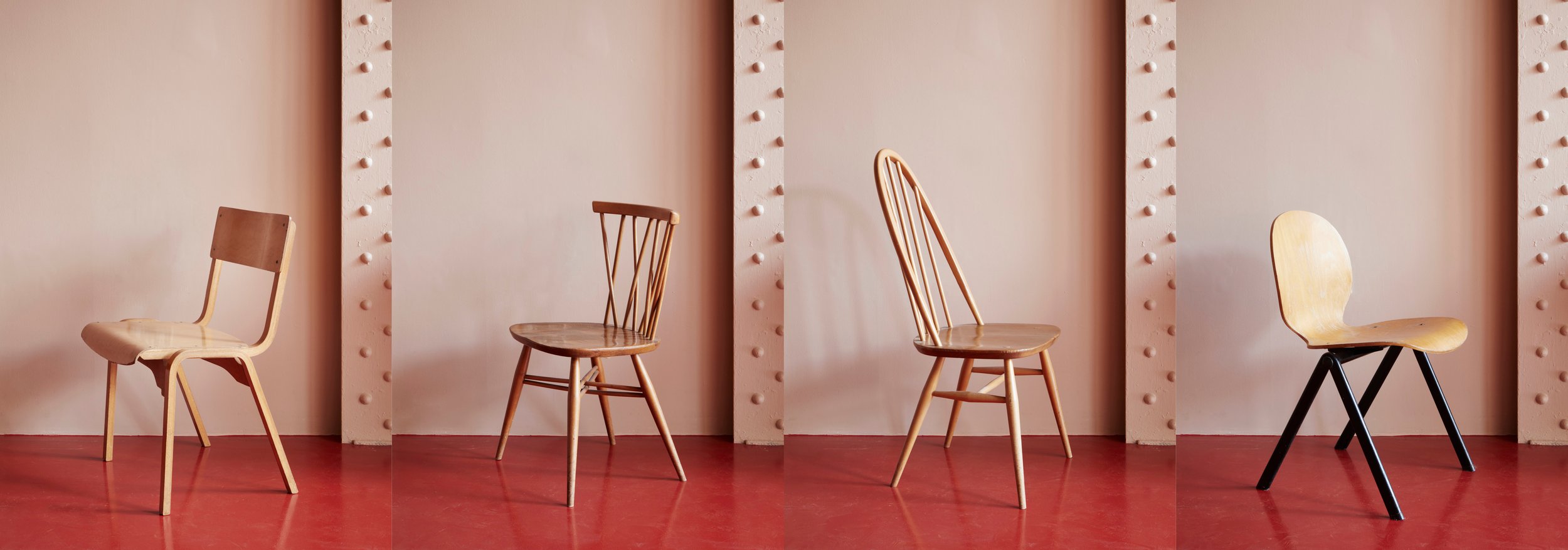The restaurant interiors reflect our founding principles and were designed by our founder, Elly Ward, a qualified architectural and interior designer. The project is an exercise in adaptive re-use and minimal intervention, showcasing sustainable materials, slow and low waste methods of construction and concepts of circular design, whilst consciously avoiding ‘green’ and ‘eco’ aesthetic cliches.
Embracing the principle of ‘editing’ as a design method, alterations were to improve the existing building, through skill and craft, making it fit for purpose.
This began with removing what is superfluous, harmful or detrimental, taking care not to lose the essence of the existing. Additions were minimal, always mindful of the original intent.
Both design and project management were practically slow and purposely labour intensive, with serendipitous specification, ad hoc decision making and satisfyingly surprising outcomes.
design approach
Occupying part of a late Victorian former factory and warehouse building, the restaurant forms part of a wider, transformational retrofit project, adapting and improving the many poorly executed re-appropriations of multiple user-occupiers over many years.
Circular design at building level is about retaining, re-using and improving what already exists, reducing operational inefficiencies and introducing longevity. Being our own client, but not the building owner, gave both advantages and disadvantages in this respect.
adaptive re-use

The integrity of the former warehouse has been retained with the brick party walls and cast iron columns and beams left exposed with minimal interventions. New partitions are designed as removable lightweight screens that slot into the existing construction.
Incompatible layers of former flooring and build-up have been stripped away to allow for strengthening and consolidation, resulting in a new floor finish designed to last beyond the extent of our own lease terms.
minimal intervention
Two new, sensitively punched openings between the restaurant and neighbouring architectural practice, a window on a stairwell and a connecting sliding door, introduce more natural light and create strong, dynamic visual connections whilst generating opportunities for dialogue between the food and architecture industries.
A seamless, low emissivity coating in a striking shade of tomato-red now flows throughout the ground floor, bringing a sense of cohesiveness and synchronicity across the two spaces.
creative dialogue
The interior exposed brickwork walls reveal large faded sign writing, an historical palimpsest of the former warehouse’s exterior. Curved cuts in the brickwork from the diamond drill used to create the opening are left undisguised and filled to create a serendipitous, decorative frame that speaks of its own formation.
fabric narratives

In circular design, minimising, or completely eliminating waste, is the priority.
So our first objective was to source everything we needed from pre-existing stocks or supplies. This included re-using, reclaiming and upcycling. We repaired old equipment, we gave new life to old objects, and we searched through junkyards and rubbish dumps.
We waited weeks, sometimes months, for promised items to arrive. Decades if you include the vintage pieces!

The terracotta tiles which clad the bar and kitchen exterior walls were rescued from the bin.
Analogous to the ‘wonky fruit’ of the food industry, an extremely wasteful practice, of which both the food and construction industries are guilty, where vast quantities of produce are discarded for not conforming to strict ideals of size, colour and shape. These tiles were rejected for barely noticeable imperfections, yet still perfectly usable.
rescued tiles
All the dining chairs and the sideboard come from a collection of vintage furniture pieces, mostly mid-century classics, personally built up by our founder, Elly, over the years, rescued from office clearances, or bought from second hand sellers, some were even previously owned by her grandparents.
pre-loved furniture
Our dining tabletops are cut from Foresso, a hand fabricated material made from waste timber such as offcuts and wood dust diverted from city maintenance, local sawmills and building sites, from trees felled in the UK. Assembled by hand in Birmingham, the wood chips are set in a 0% VOC bio-resin to resemble terrazzo.
wood waste tabletops

The bathroom wash basins are upcycled from reclaimed French copper jam pans.
Existing steel and copper worktops were carefully deconstructed and restitched to form new surfaces in the bar, kitchen and washroom areas.
upcycled + restitched

Where new elements were necessary we sourced only those made from natural, rapidly renewable or already recycled materials. Lifespans were considered to ensure elements would stay in use for as long as possible, before being re-used or recycled in the future.
All lighting is handmade by furniture maker, Peter Lanyon, using a ‘slow’ and sustainable methodology. Coppiced wood is hand selected from a well-managed forest on the south Devon coast.
Ancient methods are used to split and shave the wood with traditional tools before leaving it to season for several months. English cherry, walnut and chestnut form table lamp bases, and a hazel branch becomes a chandelier.
handmade lamps
Natural cork clads the walls of the washroom cubicles and sink areas, a 100% renewable material. Sustainable timber from FSC certified forests was used to construct the internal partitions.
renewable materials
Internal partition screens are fitted with 100% recycled translucent polycarbonate panels.
Ekoply, a 100% recycled post-consumer waste plastic material is used to line the walls of the storerooms, itself reclaimed from a previous building project.
recycled materials
We refreshed old walls with paints by Little Greene and Farrow and Ball who manufacture responsibly and use natural, organic pigments to keep their impact as low as possible and solvent free with a VOC content of practically zero.
Importantly, these paints are vegan which makes them free from animal-derived ingredients and cruelty-free.
plant based paint














